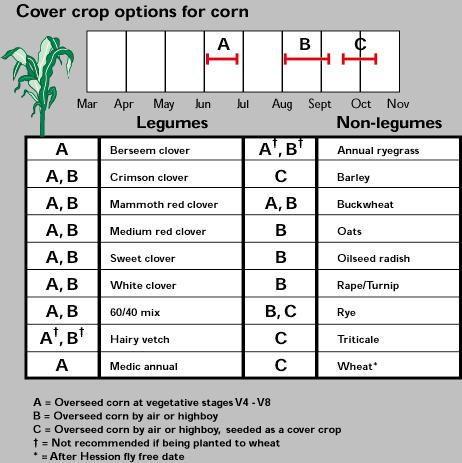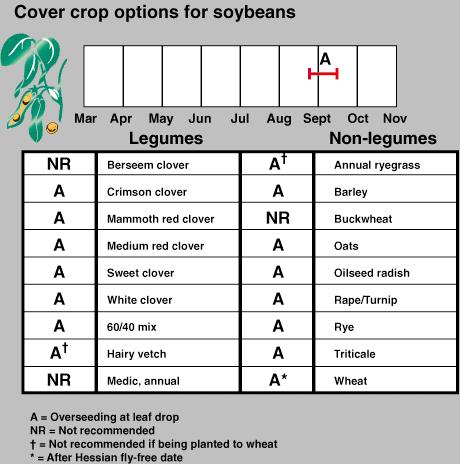Overseeding cover crops
Overseeding cover crops can give farms another option for integrating them into their rotation.
The challenge of adding cover crops for many growers is the short window between harvest and effective cover crop establishment. For many growers this means that they only use cereal rye following corn or soybeans without any cover crops, or they use aerial application. Overseeding cover crops is another planting technique that growers can use.
Overseeding is when a cover crop is planted into a growing row crop. It is best to plant it around the V-6 growth stage or around side-dressing time. The cover crop selected should be shade tolerant. When planted at the correct time, the cover crop will get minimal sunlight. Research from Cornell University concluded that annual ryegrass and red clover could be successfully seeded and had no impact on the yield of the row crop.
Good soil moisture is important to ensure a good cover crop establishment. Consider planting right before a forecasted rain or plan to irrigate right after the seeding. Seeding rate should be adjusted to account for the competition from the row crop, reduced air circulation and challenging microclimate. When considering which cover crop species to use, remember that there will be heavy traffic in the field so make sure the chosen cover crop can withstand the added traffic pressure.
The following charts where put together by Dr. Dale Mutch, Michigan State University Extension, Cover Crop Specialist. Notice that several of the common cover crop species can be overseeded. For more information on how to integrate cover crops into a specific cropping system, visit the MSU Cover Crop website.


Overseeding is not just for field crops. Vegetable growers can also put cover crops in after vegetable establishment. The cover crops will help minimize compaction as well as add valuable nitrogen into the soil. For more information on how to add cover crops into your vegetable system refer to Extension Bulletin E2896: Cover Crop Choices for Michigan Vegetables.
For more information on cover crops check out the Midwest Cover Crop Council website. To meet with a cover crop educator who can assist you in implementing cover crops on your farm contact Paul Gross, grossp@anr.msu.edu or Christina Curell, curellc@anr.msu.edu.



 Print
Print Email
Email
